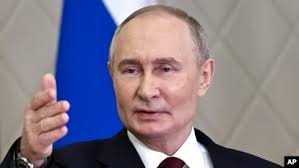
Amid the ongoing conflict with Ukraine, Russian President Vladimir Putin has approved a record-breaking budget for 2025, with $126 billion (13.5 trillion rubles) allocated to national defence. This represents 32.5% of the total government spending and is $28 billion higher than this year’s defence expenditure, according to a report by CNN.
The massive allocation is equivalent to over 6% of Russia’s gross domestic product (GDP) and marks a significant increase from last year when 28.3% of government spending was directed toward defence. Comparatively, the spending on military and law enforcement now surpasses combined expenditures on education, healthcare, social policy, and the national economy, as per The Kyiv Independent.
Projections and Economic Strain
While 2025 will see record defence spending, the three-year budget anticipates slight reductions in 2026 and 2027, with allocations of $114.9 billion and $122.4 billion, respectively. The budget had already been approved by lawmakers in the State Duma and the Federation Council in late November.
The financial strain of the war is increasingly evident. Inflation in Russia remains high, and the country is grappling with a labour shortage. To curb these challenges, the Russian Central Bank raised interest rates to 21% in October, the highest in decades.
Europe’s Largest Conflict Since WWII
The Russia-Ukraine war, which began in February 2022, remains the largest conflict in Europe since World War II, depleting resources on both sides. Although Russia boasts a larger and better-equipped military, the substantial defence spending is putting pressure on its economy and population.
Meanwhile, Ukraine continues to receive support from Western allies. On Monday, Germany announced over half a billion dollars in new military aid for Ukraine, with deliveries scheduled for December.
This defence spending surge reflects Moscow’s prioritisation of military operations despite the economic strain on its population, raising questions about the long-term sustainability of its war efforts.
Sources By Agencies
 Digital Scoop India Official Platform of Digital Scoop India Featuring Latest & Best News #Articles #Bytes #Entertainment #DigitalScoopMagazine
Digital Scoop India Official Platform of Digital Scoop India Featuring Latest & Best News #Articles #Bytes #Entertainment #DigitalScoopMagazine

